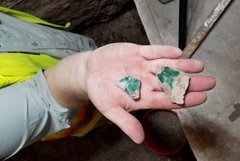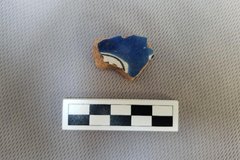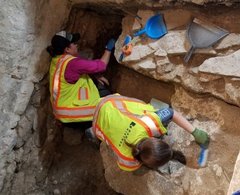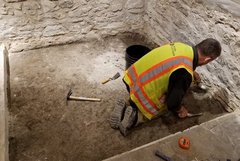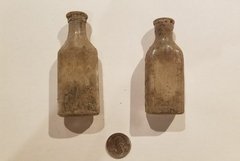During the week of August 12, the archaeology team associated with the preservation work continued excavations in the Long Barack. The archaeologists were able to work on five units in and around the Long Barrack while awaiting permissions to start the exterior unit on the north side of the structure.
Excavation Unit 18 had reached the base of the foundation of the Long Barrack the previous week. Archaeologists completed mapping and profiling on Monday of this week. Excavation Unit 17, with the features relating to the mercantile store occupation, was also mapped and profiled. This unit has placed on hold while determinations are made with the design team concerning how to proceed. Three other excavation units either continued or were opened in the historic structure.

